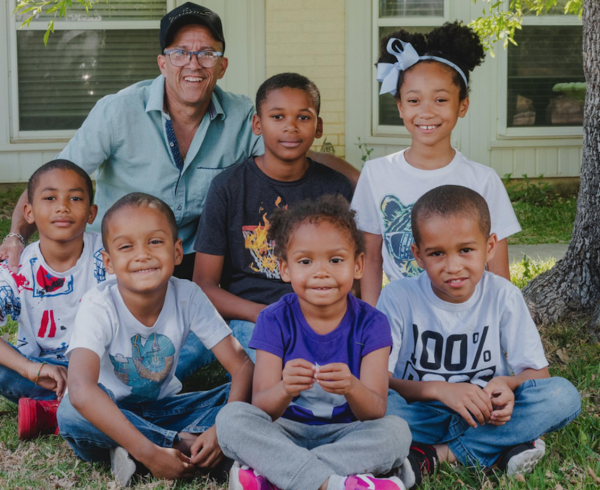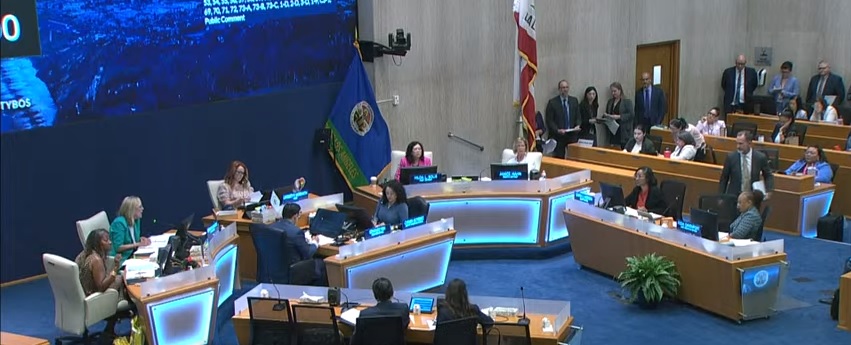By Elizabeth Hewitt for Reasons to be Cheerful.
Broadcast version by Suzanne Potter for California News Service reporting for the Solutions Journalism Network-Public News Service Collaboration
Marinel Ubaldo freezes when she hears heavy rain or intense wind.
“My brain just cannot function,” says Ubaldo, a climate activist who is studying for her master’s degree in environmental management at Duke University in North Carolina. “It triggers my trauma, and all the memories from the past just come rushing to me.”
A decade ago, when Ubaldo was in her last year of high school, her village in the Philippines was hit by Super Typhoon Haiyan. The community on the Pacific-facing shore had experienced many typhoons. Through Ubaldo’s childhood, prepping her family’s oceanfront home for storms was a regular part of life. As Haiyan approached, Ubaldo expected the same storm routine. But this typhoon with winds that reached 195 mph was equivalent to a Category 5 hurricane – much stronger than the storms the community was used to.
From an evacuation center in the building where she’d attended day care, she watched the storm devastate the town. The gymnasium roof floated in the wind like paper, she recalls. A wave washed a baby from the mother’s arms. Her family’s home was destroyed. And in the days after, before outside aid reached them, she and other members of her community just tried to survive.
For Ubaldo, the storm didn’t just leave her with traumatic memories. It also deepened her anxiety about the impacts of climate change, a feeling she says is common among her peers. “It’s overwhelming that you don’t know if you have a future,” Ubaldo says. “You don’t know if your family will still be there next month … because our future is so unpredictable because of climate change.”
As the Earth’s climate alters, regions around the world are facing more intense storms, wildfires, floods, extreme heat, and other phenomena. Less visibly, the multilayered effects of the climate crisis have huge implications for mental health. In a number of surveys, people say climate change causes them stress, worry, or fear. And many, like Ubaldo, are already dealing with anxious feelings and trauma from its impacts today.
Decades of research on the effects of the changing climate have most often focused on the environment. But in 2022, for the first time, an assessment report published by the United Nations’ climate change science arm highlighted the impact of environmental changes on mental health and well-being.
These impacts come with a significant price. Researchers estimate that mental health effects related to climate change will have a total societal cost of $23 billion in 2030, and rise to $245 billion by 2050. “Fundamentally we need to make sure the costs of climate change on mental health are accounted for, and the benefits of climate action to mental health are accounted for and responded to,” says Emma Lawrance, who leads the Climate Cares Centre at the Institute of Global Health Innovation at Imperial College London.
Climate change affects mental health in a range of ways, according to Lawrance, who is helping to lead a global research project, Connecting Climate Minds, that has involved more than 500 people across some 80 countries. Natural disasters can directly affect people’s well-being, as can longer-term shifts like rising sea levels, changing weather patterns, coastal erosion and salinization. These phenomena can lead to loss of livelihoods, migration from home communities, food and water insecurity, and the deaths of loved ones, Lawrance explains. “Understandably, that can be a trauma and an ongoing stress that can lead to, sadly, more cases of anxiety, depression, post-traumatic stress disorder, substance misuse and even death by suicide,” she says.
Research is finding links between these climate-related changes and people’s mental well-being, particularly with extreme heat. A study found that for every one degree Celsius rise in monthly average temperature, suicide rates increased by 0.7 percent in U.S. counties and 2.1 percent in Mexican municipalities. The researchers estimate that by 2050, rising temperatures could lead to between 9,000 and 40,000 additional suicides in the two countries. High temperatures also may raise risks for people who already have mental health challenges. During a 2021 heat wave in British Columbia, eight percent of people who died had been diagnosed with schizophrenia, while only one percent of the province’s general population had the condition.
There are physical effects of climate change, too, which in turn can have implications for mental well-being. During his career in cardiology, Bob Dewey saw more patients with chronic lung disease come into his office in New Hampshire in warm months when pollen counts were high. Over recent decades, climate change has resulted in longer pollen allergy seasons. These underlying health conditions are connected to mental well-being, says Dewey. “When you have trouble breathing it’s very easy to panic,” he says. “It’s just an extremely scary thing to know that you’re vulnerable to this kind of situation.”
In general, environmental changes are compounding issues faced by people who are more vulnerable. “Climate change is essentially a risk multiplier,” Lawrance says.
Meanwhile, stress and anxiety about the climate – often called eco-anxiety or climate distress - are taking a toll on some. In a study that surveyed 10,000 young people in 10 countries, 45 percent said that feelings about climate change “negatively affected their daily life and functioning.” According to Google, English-language searches related to “climate anxiety” were 27 times higher in the first 10 months of 2023 compared with the same period six years earlier.
Distress about the environment and climate is not necessarily a mental health condition on its own, according to Lawrance. “But it can be an ongoing stressor that without support can worsen people’s mental well-being, disrupt their sleep, disrupt their daily life.”
Finn Does used to feel paralyzed by bad news about the climate crisis. The San Francisco Bay Area 18-year-old says he often read headlines and saw social media posts about environmental disasters and alarming studies. “I was caught in this whirlpool of all this news about climate change and the climate crisis,” he says.
For Does, anxiety around climate change led to feelings of despair, guilt, grief, hopelessness and fear. Then one day, as wildfires blazed in California, the sky in the Bay Area turned orange. The scene was “apocalyptic,” he recalls. He describes that day as a wake-up call that spurred him to take action. “I was just thinking about, ‘Wow, I have a whole life ahead of me,'” Does says. “If this is happening right now at such a young age, what’s going to be happening to me 10, 20, 30, 40 years from now?”
Now a senior in high school, Does is co-chair of the Bay Area Youth Climate Summit, an environmental justice activism network. He’s also involved in a project researching emotions related to climate change among young people across California. Through his research and conversations with other young people, his impression is that those who aren’t involved in climate work seem to feel more isolated and pessimistic. Meanwhile, people who participate in climate action seem to feel a sense of community and connection. “They have an extreme amount of awareness about climate, which gives them a lot of fear and a lot of anxiety,” Does says. “At the same time, they have way more optimism and way more hope than those folks that aren’t involved in climate work.”
Along those lines, taking part in collective action related to the climate may help relieve eco-anxiety, suggests a study led by the Yale School of Public Health published in 2022. Robert Feder, a retired psychiatrist and member of the Climate Psychiatry Alliance and NH Healthcare Workers for Climate Action, says that for mental health professionals, treating eco-anxiety involves trying to help people strengthen their responses to stress. Alongside general tools for resilience – like eating well, exercising and mindfulness techniques – building up social connections is important, he says. Getting involved with climate work can help people find social supports and address stress linked to climate change. “Not just sitting and worrying about it and feeling distressed about it, but doing something about it is really the most helpful thing to deal with the anxiety that it causes,” says Feder.
Experts say climate action can take many different forms. Some people might enjoy demonstrating in the streets, but others may find environmentally minded groups that suit their particular interests.
When the Rotary Club of Orléans, Ontario, launched a project in 2023 to work with high school students to plant 1,000 trees outside of Ottawa, part of the goal was to create an opportunity for young people to address feelings of eco-anxiety by engaging with the environment, according to Phil McNeely, who chairs the club’s environmental sustainability committee. One rainy day in May 2023, 70 teenagers came out to plant trees on farmland. Based on this initiative, the club is now working with other local Rotary clubs to create the Ottawa Rotary Youth Forest, a reforestation project that will involve students from area schools in planting and caring for trees. “They’ll get an outlet, I think, for their frustrations about climate change,” says McNeely.
There are also groups that convene specifically with the aim of talking about emotions related to the climate crisis. Does, for instance, has led “climate cafes.” These facilitated conversations create an opening for people to discuss their feelings about climate change’s threats to the world, says Wendy Greenspun, a New York City-based psychologist and a member of the Climate Psychology Alliance North America, who leads climate cafe trainings. “People often feel quite isolated. It’s not a topic that we often think of bringing up at a dinner party,” Greenspun says. “So creating a space that’s outside of our usual hustle and bustle and ways of being social in itself already provides something.”
For some people, group discussions may not be enough support – Greenspun and other psychologists also treat people who benefit from individual therapy. But for many, she says, the group setting provides an avenue to air negative emotions. Through the process people begin to feel validated and less alone. “I call it composting our emotions,” says Greenspun. “New feelings can start to emerge and grow, like a sense of excitement that ‘maybe I can do something,’ a sense of deep meaning and connection with others, a sense of solidarity, a sense of courage.”
Approaches to help people, particularly young people, cope with climate distress are growing around the world. For instance, SustyVibes, an organization based in Nigeria, is creating online and in-person opportunities to discuss eco-anxiety among Africans. The Good Grief Network, based in the US, focuses on building resilience. The UK-based Resilience Project trains leaders of “resilience circles” where peers can support each other. The Climate Cares Centre, which Lawrance leads, launched a guided journal to help young people manage eco-anxiety and transform negative feelings into positive actions.
But climate action doesn’t completely address the mental health burden. Among young activists, there’s a risk of burnout. And while young people are increasingly discussing these climate-related emotions among themselves, there’s also a need for older people to support young people experiencing eco-anxiety, Lawrance says. “We see a big need to equip teachers and parents and train medical professionals and mental health professionals so they’re validating these experiences of distress,” she says.
Meanwhile, many communities are already dealing with the effects of climate change – including on mental health.
In the Philippines, Ubaldo sees the influence it has on her peers, many of whom worry for the safety of themselves and their families and question whether they want to have children because of the changing environment. The Philippines is among the countries most vulnerable to climate change. In a survey of young people in 10 countries, Filipinos reported the highest levels of climate anxiety.
Reducing stigma around mental health and increasing access to services is important to support communities hurt by climate disasters, Ubaldo says. Incorporating mental health into disaster response could help people talk about their feelings and move forward. “We have to ensure that these experiences are processed or addressed before we experience another super typhoon, because it really adds to our capacity if we know that what we are experiencing or what we are feeling is valid,” she says.
Ubaldo is a registered social worker in the Philippines, and as a volunteer, she’s worked with people who have experienced disasters. But she says there’s a need for government support of such relief services and for more capacity to manage the mental health effects of a climate-related disaster. “I know that there is a great need from the conversations that I have with the community members whenever I’m doing a debriefing after a disaster,” Ubaldo says.
Around the world, initiatives are working to build up mental health treatment services in regions that are particularly vulnerable to climate change. Rotary members in southeastern Australia, for example, helped start Trauma Recovery Network Australia to train health care professionals in rural areas so that communities are better positioned to counter possible mental health harms of disasters. “For mental health, you need people there, and continuously,” says Pam Brown, a psychologist and a member of the Rotary Club of Gisborne who led the creation of the network.
The initiative, which began in 2020, holds workshops in regions hit by wildfires. Often areas that are vulnerable to fires are also susceptible to other climate change impacts, like coastal erosion or weather changes that affect farming. In rural areas, mental health professionals may have fewer opportunities for trauma treatment training, and community members don’t have easy access to local support, Brown explains.
After bushfires in 2019 and 2020, the Australian network began training groups of social workers, psychologists, counselors, and other mental health experts on how to treat people using a technique called eye movement desensitization and reprocessing. In the treatment, people bring up a traumatic memory while simultaneously engaging in “bilateral stimulation,” something like shifting their eyes from one side to the other or tapping their hands in an alternating pattern. The approach has been endorsed as a treatment for trauma by the World Health Organization, the American Psychological Association, and the Australian Psychological Society, among others. Studies find that the treatment reduces symptoms of PTSD and other distress among survivors of disasters including earthquakes, hurricanes and floods.
Meanwhile, the mental health reverberations of Australia’s bushfires linger. A survey of people affected by the fires 12 to 18 months later found high levels of distress, including anxiety and depression. Over 60 percent of the nearly 100 mental health professionals who participated in the Trauma Recovery Network Australia trainings have completed the requirements needed to join the national association for practitioners of eye movement desensitization and reprocessing, and even more have used the treatment in their practice, Brown says. “It’s helping therapists not feel so helpless,” she says.
Supporting mental health in the face of climate change is not only about responding. Building psychological resilience can also be incorporated into climate adaptation efforts, Lawrance says. Strengthening social connections and being prepared for climate events can buffer against mental health strains. “We know that when a disaster hits, the communities that have stronger social bonds tend to be the ones who are less affected psychologically and more able to respond practically than those that have weaker social ties,” Lawrance says.
As the connection between mental health and climate comes into the spotlight, one of the challenges is understanding the full extent of this intersection. Data is hard to gather because there are so many ways that climate could intertwine with well-being. But research is growing, as are approaches to supporting mental health against climate change stressors. “There are these vicious cycles of compounding challenges, but it also means that there are compounding opportunities when we take action,” Lawrance says. “There is a brighter future to be working toward that is better for the climate and also better for our minds.”
Elizabeth Hewitt wrote this article for Reasons to be Cheerful.







